Hyundai IONIQ 6 vs Mercedes EQE – Which model is better for everyday use?
Compare performance, boot capacity, efficiency and price at a glance.
Find out which car is the better choice for you – Hyundai IONIQ 6 or Mercedes EQE?
Costs and Efficiency:
Looking at overall running costs, both models reveal some interesting differences in everyday economy.
Hyundai IONIQ 6 has a convincingly advantage in terms of price – it starts at 37600 £, while the Mercedes EQE costs 57600 £. That’s a price difference of around 19960 £.
In terms of energy consumption, the advantage goes to the Hyundai IONIQ 6: with 13.90 kWh per 100 km, it’s to a small extent more efficient than the Mercedes EQE with 15.80 kWh. That’s a difference of about 1.90 kWh.
As for range, the Mercedes EQE performs a bit better – achieving up to 691 km, about 77 km more than the Hyundai IONIQ 6.
Engine and Performance:
Power, torque and acceleration are the classic benchmarks for car enthusiasts – and here, some clear differences start to show.
When it comes to engine power, the Hyundai IONIQ 6 has a minimal edge – offering 650 HP compared to 625 HP. That’s roughly 25 HP more horsepower.
In acceleration from 0 to 100 km/h, the Hyundai IONIQ 6 is hardly perceptible quicker – completing the sprint in 3.20 s, while the Mercedes EQE takes 3.50 s. That’s about 0.30 s faster.
In terms of top speed, the Hyundai IONIQ 6 performs somewhat better – reaching 257 km/h, while the Mercedes EQE tops out at 220 km/h. The difference is around 37 km/h.
There’s also a difference in torque: Mercedes EQE pulls to a small extent stronger with 950 Nm compared to 770 Nm. That’s about 180 Nm difference.
Space and Everyday Use:
Beyond pure performance, interior space and usability matter most in daily life. This is where you see which car is more practical and versatile.
Both vehicles offer seating for 5 people.
In curb weight, Hyundai IONIQ 6 is noticeable lighter – 1850 kg compared to 2375 kg. The difference is around 525 kg.
In terms of boot space, the Mercedes EQE offers slight more room – 430 L compared to 401 L. That’s a difference of about 29 L.
When it comes to payload, Mercedes EQE noticeable takes the win – 600 kg compared to 430 kg. That’s a difference of about 170 kg.
Who wins the race?
The Hyundai IONIQ 6 proves to be offers a more balanced package and therefore becomes our DriveDuel Champion!
Hyundai IONIQ 6 is the better all-rounder in this comparison.
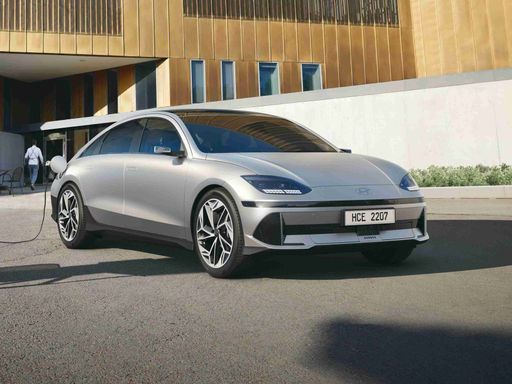
Hyundai IONIQ 6
Hyundai IONIQ 6
The Hyundai IONIQ 6 merges futuristic design with eco-friendly technology, offering a glimpse into the future of electric mobility. Its sleek silhouette and aerodynamic profile are sure to capture attention on the road, while the interior provides a seamless blend of comfort and cutting-edge digital features. With a focus on efficiency and sustainability, this model represents a significant step forward in the evolution of electric vehicles.
details @ hyundai.news
@ hyundai.news
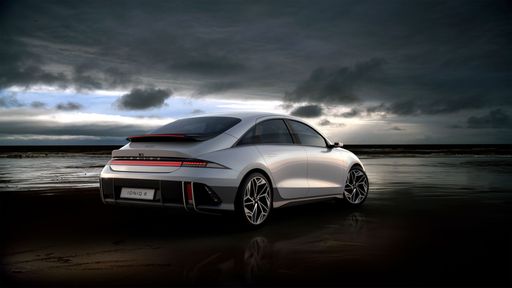 @ hyundai.news
@ hyundai.news
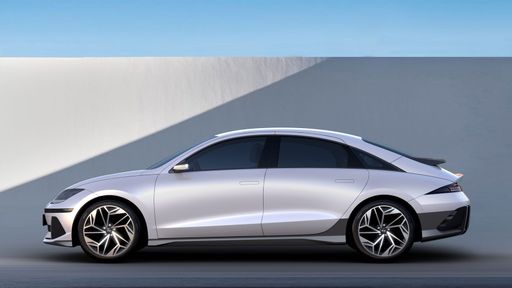 @ hyundai.news
@ hyundai.news
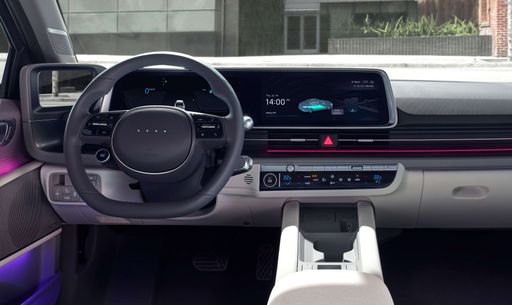 @ hyundai.news
@ hyundai.news
Mercedes EQE
The Mercedes-Benz EQE epitomises the brand's commitment to luxury and electric mobility, offering a seamless blend of cutting-edge technology and elegant design. Inside, occupants are treated to a sophisticated cabin that combines high-quality materials with state-of-the-art infotainment features, ensuring a refined driving experience. On the road, the EQE impresses with its smooth, quiet ride and impressive agility, making it a standout choice for those seeking both comfort and sustainability.
details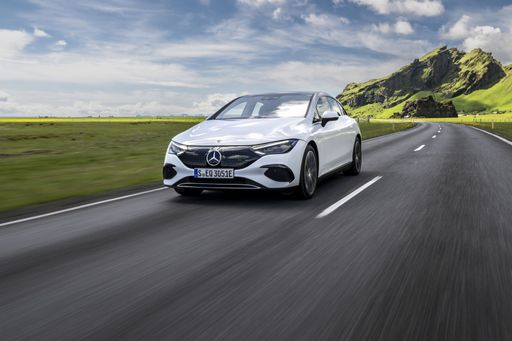 @ group-media.mercedes-benz.com
@ group-media.mercedes-benz.com
 @ group-media.mercedes-benz.com
@ group-media.mercedes-benz.com
 @ group-media.mercedes-benz.com
@ group-media.mercedes-benz.com
 @ group-media.mercedes-benz.com
@ group-media.mercedes-benz.com
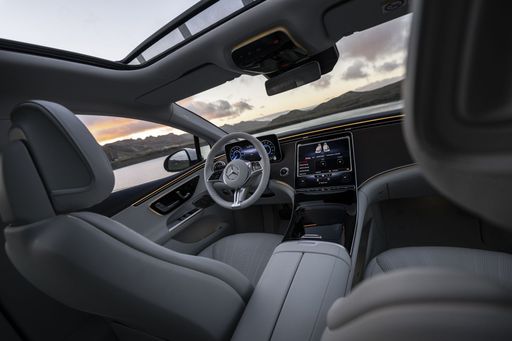 @ group-media.mercedes-benz.com
@ group-media.mercedes-benz.com

|

|
|
|
|
Costs and Consumption |
|
|---|---|
|
Price
37600 - 64300 £
|
Price
57600 - 94900 £
|
|
Consumption L/100km
-
|
Consumption L/100km
-
|
|
Consumption kWh/100km
13.9 - 15.1 kWh
|
Consumption kWh/100km
15.8 - 20.7 kWh
|
|
Electric Range
429 - 614 km
|
Electric Range
502 - 691 km
|
|
Battery Capacity
53 - 84 kWh
|
Battery Capacity
90.5 - 96 kWh
|
|
co2
0 g/km
|
co2
0 g/km
|
|
Fuel tank capacity
-
|
Fuel tank capacity
-
|
Dimensions and Body |
|
|---|---|
|
Body Type
Hatchback
|
Body Type
Sedan
|
|
Seats
5
|
Seats
5
|
|
Doors
4
|
Doors
4
|
|
Curb weight
1850 - 2095 kg
|
Curb weight
2375 - 2540 kg
|
|
Trunk capacity
401 L
|
Trunk capacity
430 L
|
|
Length
4855 - 4935 mm
|
Length
4946 - 4964 mm
|
|
Width
1880 - 1940 mm
|
Width
1961 mm
|
|
Height
1495 mm
|
Height
1492 - 1510 mm
|
|
Max trunk capacity
-
|
Max trunk capacity
-
|
|
Payload
425 - 430 kg
|
Payload
545 - 600 kg
|
Engine and Performance |
|
|---|---|
|
Engine Type
Electric
|
Engine Type
Electric
|
|
Transmission
Automatic
|
Transmission
Automatic
|
|
Transmission Detail
Reduction Gearbox
|
Transmission Detail
Reduction Gearbox
|
|
Drive Type
Rear-Wheel Drive, All-Wheel Drive
|
Drive Type
All-Wheel Drive, Rear-Wheel Drive
|
|
Power HP
151 - 650 HP
|
Power HP
265 - 625 HP
|
|
Acceleration 0-100km/h
3.2 - 8.8 s
|
Acceleration 0-100km/h
3.5 - 6.9 s
|
|
Max Speed
185 - 257 km/h
|
Max Speed
210 - 220 km/h
|
|
Torque
350 - 770 Nm
|
Torque
550 - 950 Nm
|
|
Number of Cylinders
-
|
Number of Cylinders
-
|
|
Power kW
111 - 478 kW
|
Power kW
195 - 460 kW
|
|
Engine capacity
-
|
Engine capacity
-
|
General |
|
|---|---|
|
Model Year
2022 - 2025
|
Model Year
2024 - 2025
|
|
CO2 Efficiency Class
A
|
CO2 Efficiency Class
A
|
|
Brand
Hyundai
|
Brand
Mercedes-Benz
|
What drive types are available for the Hyundai IONIQ 6?
Available configurations include Rear-Wheel Drive or All-Wheel Drive.
The prices and data displayed are estimates based on German list prices and may vary by country. This information is not legally binding.
